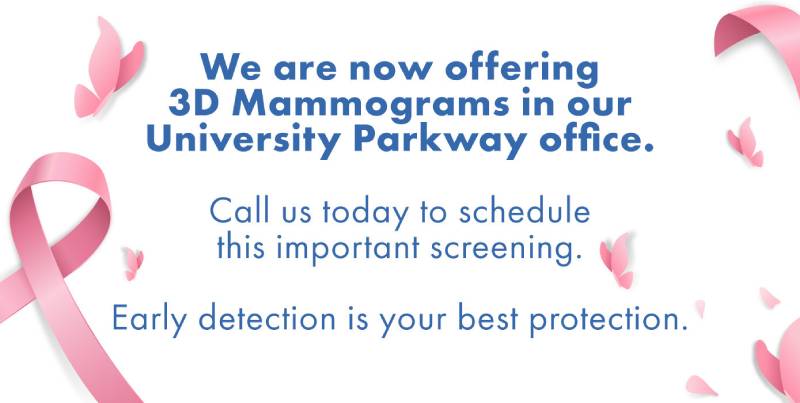When the uterus has an irregular shape, it’s known as a bicornuate uterus. In general, this is a heart-shaped uterus that features two distinctive sides instead of just a single hollow space. A bicornuate uterus is a congenital and actually rather rare condition that could make pregnancy more complicated and problematic. With this type of uterus abnormal shape, surgery is a necessary form of treatment. If you have any worries about your gynecological health or plan to conceive, don’t hesitate to make the most out of our gynecological care at University Park, Florida. That said, let’s discuss the matter of a heart-shaped uterus in more detail.
What’s a Bicornuate Uterus?
A bicornuate uterus has a more heart-shaped appearance than the typical spherical one. The average female uterus has the form of an inverted pear. The top of the uterus is most like the pear’s broad, spherical part (fundus). When viewed from above, a bicornuate uterus’s abnormal shape looks like a heart because its upper portion dips inward near its midsection.
As the developing baby takes up more and more space in the uterus, this single, hollow hole is designed to handle the growth. A bicornuate uterus is one in which the organ’s upper portion is divided by a thin membrane. This can be problematic as the uterus may not have enough room to support the growing fetus during pregnancy.
One has to be born with a bicornuate uterus because this abnormality develops during pregnancy. Miscarriage and premature labor are more likely to occur in women who become pregnant while their uterus is bicornuate. If you have a heart-shaped uterus, chances are you won’t know it because you won’t experience any symptoms of a bicornuate uterus. However, some women suffer from recurrent miscarriages or very painful periods.
Although bicornuate uteruses are known to be one of the common uterine abnormalities, they are nevertheless considered relatively rare. Namely, only about half one percent of those who are biologically female have this type of uterus of abnormal shape. Most people don’t learn they have it until they try to have a baby and suffer multiple miscarriages.
A bicornuate uterus doesn’t necessarily have to be harmful. This condition is not typically accompanied by any outward signs or symptoms of a bicornuate uterus. Complications during pregnancy can be exacerbated by the abnormal uterine shape. Your healthcare practitioner is your best resource for learning about the bicornuate uterus and its implications for your health and daily life.
Potential Symptoms of Bicornuate Uterus

While they don’t have to show at all, the bicornuate uterus symptoms, when present, can include the following:
- Painful periods and/or intercourse
- Pain in the pelvic area
- Vaginal bleeding
- Recurrent miscarriages (three or more)
In the absence of obvious signs, it is possible that a woman might never suspect she has a heart-shaped uterus. As a bicornuate uterus is a congenital disability, you may not feel any different from anyone else. It is not uncommon for a woman to discover she has a heart-shaped uterus after experiencing multiple miscarriages or getting pregnant.
Normal fetal development involves the fusion of two ducts into a single uterine canal. Due to the incomplete union of the ducts, a bicornuate uterus has two separate chambers. In women who have a bicornuate uterus, the heart shape may be mild or severe. You can’t pass on having a bicornuate uterus to your offspring.
The Diagnosis of Bicornuate Uterus
Having a bicornuate uterus is usually undiagnosed until after the third or fourth miscarriage. After several miscarriages, it is important to examine the uterus for any abnormalities. A heart-shaped uterus may also be discovered during prenatal ultrasounds or examinations for unpleasant periods. This is not a specific bicornuate uterus ultrasound, but it can shed light on pregnancy complications.
A bicornuate uterus will be confirmed after a thorough pelvic exam and multiple imaging methods. A bicornuate uterus can be distinguished from other uterine anomalies by having the separation depth measured.
Heart-shaped uteruses are typically identified by bicornuate uterus ultrasound screening. Your healthcare professional may utilize additional diagnostic tools to gain a clearer picture of your uterus’s anatomy after the condition has been confirmed. 3D bicornuate uterus ultrasound can be useful as well.
Due to its ability to display information from a variety of perspectives and dimensions, MRI provides the most accurate images of the uterus.
Different Kinds of Bicornuate Uterus
Your doctor may classify your bicornuate uterus as complete or partial (incomplete), depending on the severity of the condition. Both of these describe the degree to which the cervix is positioned above the uterus.
A uterus with only a moderate degree of bicornuation is said to be partial. The uterus is still in the shape of a heart, but the dent is less pronounced.
When the depression at the top of the uterus is deep enough to divide the uterine cavity clearly, the condition is known as a complete bicornuate uterus.
Available Treatment Options

The majority of people with this condition do not require surgical intervention. However, if a bicornuate uterus requires fixing, surgery is the only solution.
Metroplasty is a surgical procedure that can correct the bicornuate uterus. However, this is a contentious treatment that is only done under certain conditions. The uterine shape will be altered to achieve the ideal inverted pear form. The incision size for this procedure is relatively small because it can be performed laparoscopically. Tissue that creates the dent of the heart shape will be surgically removed.
After undergoing a metroplasty, patients should wait three months minimum before trying to get pregnant because of the higher possibility of uterine rupture during delivery.
Bicornuate uterus correction surgery carries the following risks:
- Scarring of the uterus
- Infection
- Bleeding
Your doctor will go over the benefits and drawbacks of the recommended surgical therapy for your bicornuate uterus if you end up needing it to have a healthy pregnancy.
The development of a uterus in the shape of a heart is not something that can be prevented. You were born with this condition, and it was not caused by your parents’ actions or inactions.
Even if your uterus is bicornuate, you can still have a child. It’s true that you’re more vulnerable to difficulties during pregnancy. This is primarily because your uterus lacks the flexibility to enlarge and accommodate your growing kid. If you have a heart-shaped uterus, you and your doctor can discuss the potential risks and necessary precautions of this unique anatomical feature during pregnancy.
Check with your doctor about the potential risks associated with your bicornuate uterus. Based on your medical history and current symptoms, they will be able to advise you on the potential dangers. Those who have a heart-shaped uterus are more likely to experience difficulties during pregnancy. However, the vast majority of women with this condition will still give birth to healthy kids. You’re welcome to consult with our University Park OB/GYN experts for any health concerns you may have.


